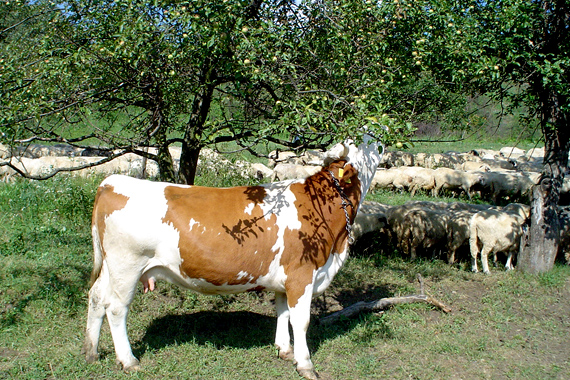
Picture from Flickr by Aleksander Dragnes
‘Grass fed’ and ‘pasture raised’ are terms we are all too familiar with. Numerous articles have been written about the nutritional profile of meat as well as dairy produce from grass fed cattle, highlighting its superiority over gran fed equivalents: higher proportion of Omega-3 fatty acids , higher proportion of stearic acid (aka healthier saturated fat that doesn’t raise cholesterol), more antioxidants, vitamins and minerals. You can read more about it here and here.
However, I wanted to explore this topic a little bit further and go beyond the Omega-3s. I am very excited to bring you this insightful Q&A with Anthony Waugh, an Australian farm owner who is an advocate of what I would call ‘holistic farming principles’ – encompassing welfare of the animals, environmental sustainability, minimal use of chemicals and economic viability. This was very interesting to me and I hope you enjoy it.
In a few sentences, tell us about what your farm and what you do….
We grow beef, lamb and fine wool on about 5000 acres just south of Mudgee, in the NSW Central Tablelands. Our focus is on producing meat which resembles, as closely as possible, meat from wild animals. We do this by ensuring they have the space, diversity of food and cultural knowledge to express their own nutritional wisdom. This produces slower growing, but healthier livestock; and of course, healthier animals means healthier meat.
The paleo diet promotes eating grass-fed meat as it is considered more nutritionally superior than the meat from grain-fed cattle. Can you explain the key differences between grass-fed and grain fed and how it affects the animals and the nutritional profile of the meat?
Simply put, grain is like ice-cream to ruminants. They love it and they’ll seek it out in the paddock, (it’s just grass seed and there’s usually some around). It’s really high in the macro-nutrients, protein and energy, but low in micro-nutrients.
If animals are fed a diet high in grain, it’s the equivalent to a human eating too much dessert; they’ll get fat, with all the health problems associated with obesity, and the meat will be low in all the important micro-nutrients. This matters to us because while the macro-nutrients (fat, sugar and protein) are what drives our hunger, it’s the micro-nutrients which regulate satiety (make us feel full/satisfied).
So if our food is low in micro-nutrients, we eat too much of it before we feel full. Livestock work in the same way, this is how feed lots achieve so much weight gain so quickly.
Our Palaeolithic ancestors ate wild animals. Wild animals (and in fact, all animals, us included) have what is known as “nutritional wisdom”. This is the ability to know what to eat and when to eat it, in order to provide one’s body with the nutrition it requires for optimum heath.
The BEHAVE group in the US has shown that this wisdom is both genetic and cultural, and develops both in utero and throughout life. Eating for a ruminant is a difficult and hazardous task. All plants produce toxins as a defence against being overeaten and the task of a ruminant is to understand which plants to eat in order to derive the nutrition they need, when to eat them and what to eat next; often as an antidote the toxins in the last plant.
For this purpose they have evolved an incredibly complex neural network between brain and stomach; where the stomach provides almost instantaneous feedback to the brain about the good and bad qualities of the plants they are eating and how to get the most out them without poisoning themselves.
If you observe wild animals grazing, you soon notice they don’t spend very long in one place, or on one plant. They browse in seemingly random ways, sampling this plant and that, sometimes licking moss and lichens off rocks, nibbling tree bark or even eating termite mounds.
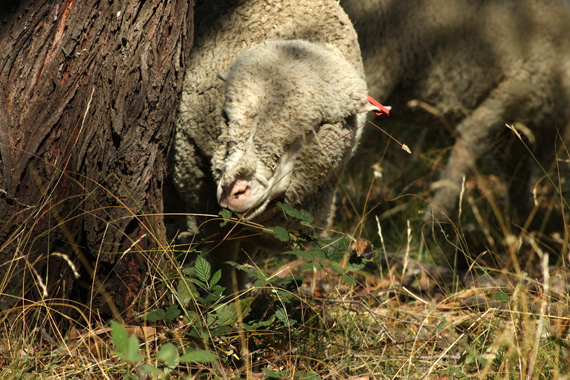
Most grass fed beef and lamb sits somewhere in the middle of these two extremes. If stock are confined to paddocks which are ploughed yearly and sown to annual grasses or lucerne, then there’s no discernible nutritional difference to grain fed.
Growth is fast, which is good for the farmer’s bottom line, but bad for the health of the animal and the humans, which are eating them. If the paddocks are mostly perennial grasses, with some shrubs and trees, the nutrient density of the meat will be better, depending on the range and diversity of species available to them and their understanding of the local conditions.
The best domestic meat comes from animals who are bred and raised in the same place, are allowed to stay with their family groups and have enough room and diversity of forage to find all the nutrition they need for optimum health. In other words, they need to eat as if they are wild animals.
Do the effects of pasture-raised animals go beyond nutrition and animal welfare? How does it affect our relationship with the land and the environment for example?
Certainly our relationship with the land is heavily influenced by the way we farm. If we view a diverse environment as the source of our productivity, we manage for the birds, insects, soil microbes and native mammals as well as for our domestic animals. If however, our farming methods view all those other lives as competitors, then we attempt to remove them, effectively sterilising the land.
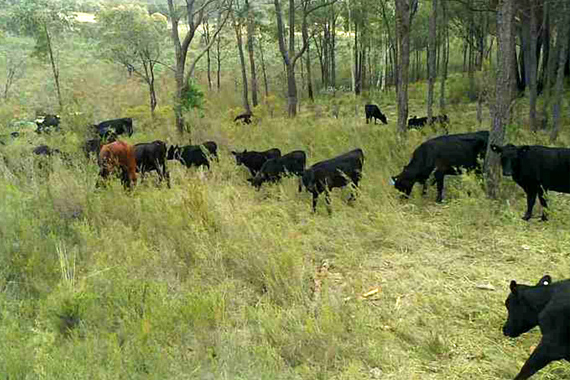
Are there other factors, beyond cattle’s diet, that affect the quality of the meat?
Stress is the big one. We know from the human experience that if our stress levels are high, our hormone balance is out of whack. It’s the same for animals. I think the hormones produced by livestock can be just as big an issue as those, which are given artificially to them. If your cortisol levels are high due to stress, you are less healthy, the same goes for sheep and cows. We can influence this by the environment we create for them and the way we manage them.
A lot of people believe that meat consumption has a negative impact on the environment and CO2 emissions. How would you respond to that given that different farming practices have a different effect on the land?
I won’t go too much into this, as people like Allan Savory have covered it really well. Good grassland management (which depends on grazing animals) sequesters far more CO2 into the soil than the ruminants emit. Cropping for grain feeding is actually the most emissions intensive part of conventional meat production.
Can you explain the difference between 100% grass fed vs grass fed and grain finished and what that means for the cattle and the consumer?
Pretty well all livestock are grown on grass of some kind. The reason you hear terms like “grain finished” or “100 days grain fed” is that that’s about the longest you can feed ruminants a high grain diet. They get sick with both acute problems like acidosis and chronic problems like insulin resistance and obesity.
But even if they are 100% grass fed, you need to know how they were finished, because a paddock cleared with herbicides, then sown to a chemically fertilised oats crop, will give you similar meat to grain feeding.
Overall, how would you rate red meat in Australia? Are we moving in the right direction and what can we as consumers do to improve it?
What the conventional meat industry in Australia is terrified of is consumers asking questions. The industry is driven by agribusiness, not farmers, and is heavily reliant on energy from fossil fuels to do work which, for the most part, the natural world will happily do for us if we let it and occasionally lend a helping hand. Informed consumers demanding quality from the production methods and the end product is the best way to achieve positive change here, because let’s face it, it’s not going to come from above.
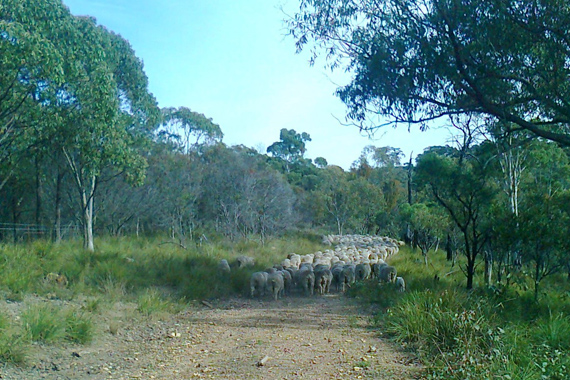
Let’s talk about nose to tail cooking. What are the most underused beef or lamb cuts that are actually great to cook with?
I love nose to tail cooking for two reasons. Ethically it shows great respect for an animal, who has died to feed us, to utilise every part you can; and because the so-called secondary cuts are often the most delicious.
My favourites are the stewing and braising cuts; lamb neck and shanks, and beef brisket and osso bucco. It’s the way the connective tissue breaks down when cooked slowly which adds that intense flavour and gooiness to the dish that makes them so good.
I should also give a shout out to the humble blade steak. If you can get over the sinew that runs through it (eat around it or just use your teeth – that’s what they’re there for) it’s the nicest grilling steak there is.
One of the most frequent points that comes up when talking about grass fed meat is the cost? Is it a matter of how much it actually costs to raise healthy cattle and thus you get what you pay for or can we see the cost come down if the demand increases?
In the old days of cheap oil and subsidised fertiliser and agrochemicals, grain feeding was cheaper than grass feeding, but it’s no longer the case. When grass fed meat is being sold for 50% more than conventional meat, the consumer is being ripped off.
The faster growth rate of grain feeding is completely offset by the greater input costs so the price for the end product should be at least comparable. We base our meat prices on those of the major supermarket chains and local butcher shops and we don’t feel like we’re discounting at all.
And finally, when shopping for red meat – beef or lamb – what should the consumers be looking for and what should they ask their butcher/supplier?
Everything we’ve discussed here is relevant, but probably the most important questions to ask are: where does the meat come from and what was it fed on? Don’t settle for an answer of “grass”. You want to know what kind of grass, was it dry hay, native perennials or sown annuals; were herbicides, pesticides or chemical fertilisers used? If they can’t or won’t answer, find someone who will.
And if you find a supplier you’d like to have a long-term relationship with, make the effort to visit the farm. Even asking about a farm visit can tell you a lot about the farming practices. Most farmers who are farming in the kinds of ways we are talking about here can’t wait to show people what they’re doing, whereas an operation interested in profit rather than quality will not want you to see how they operate.
If you do go to visit the farm, ask yourself, “Do I like it here? Does it look like nature or does it look like industry?” Let your instincts decide whether you want to put food from this place into your body.
Once again, I would like to thank Anthony for sharing his insights with us. You can find more about Anthony and his work at High Steaks Farming here. They also have a Facebook page.


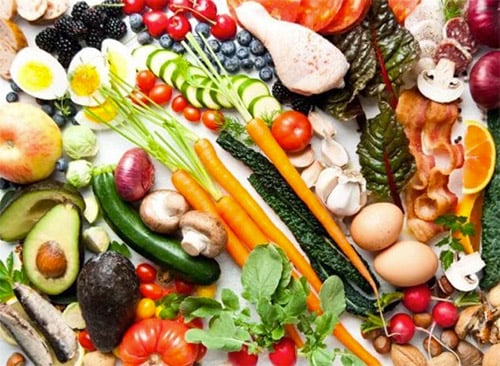
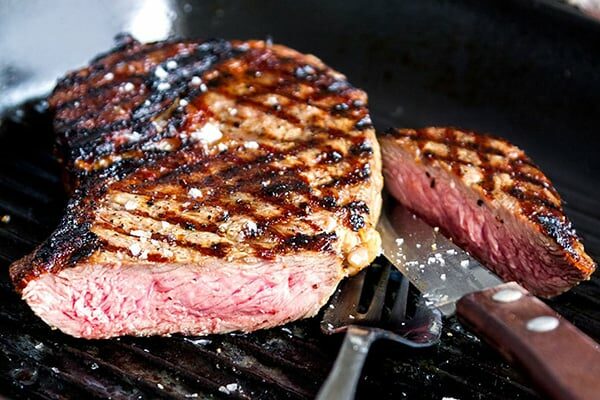
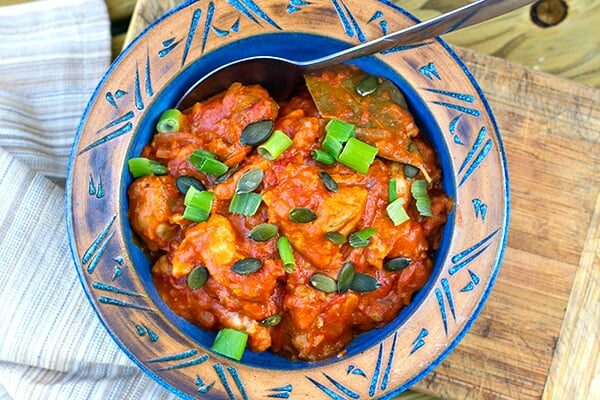
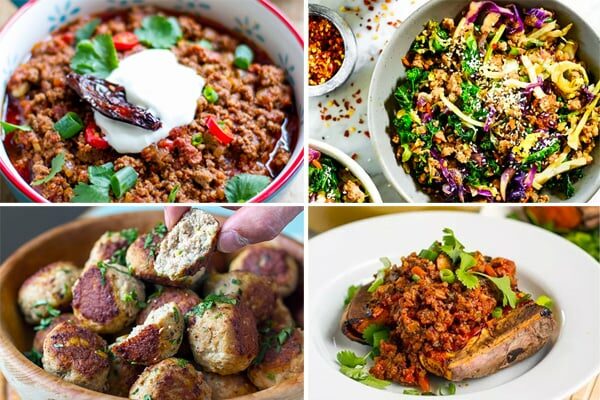
Great article, thanks guys!
Really informative article. How about this line though? “If stock are confined to paddocks which are ploughed yearly and sown to annual grasses or lucerne, then there’s no discernible nutritional difference to grain fed. Growth is fast, which is good for the farmer’s bottom line, but bad for the health of the animal and the humans, which are eating them.” Are there studies that show this? I would think most “grass-fed” beef is actually fed annual grasses.
As an agronomist, and also a grass fed beef farmer, the debate is much more complex than suggesting that such cattle are more un-healthy than those fed on annual grasses or lucerne. Generally pastures recommended in grass finishing operations are mixes of perennial grasses such as ryegrass, fescues and phalaris along with clovers to provide protein for a growing animal. Legumes (clovers) also fix nitrogen from the atmosphere, reducing the need for synthetic nitrogen based fertilisers that are suggested to be problematic in this article. Often beef operations are dependent on their location, some more extensive while others more intensive.
If there are no concernes about the farmers bottom line then maybe we should sell the farms, lower our domestic supply of agricultrual products and begin importing more.
Interesting article. Thanks for sharing. It’s very difficult to source guaranteed grass fed meat. What’s the go with supermarkets that have grass fed lines… are they for real?
Yeah, these days they have to be, I think. You can still do your own research into those brands but I’d say they’re legit.